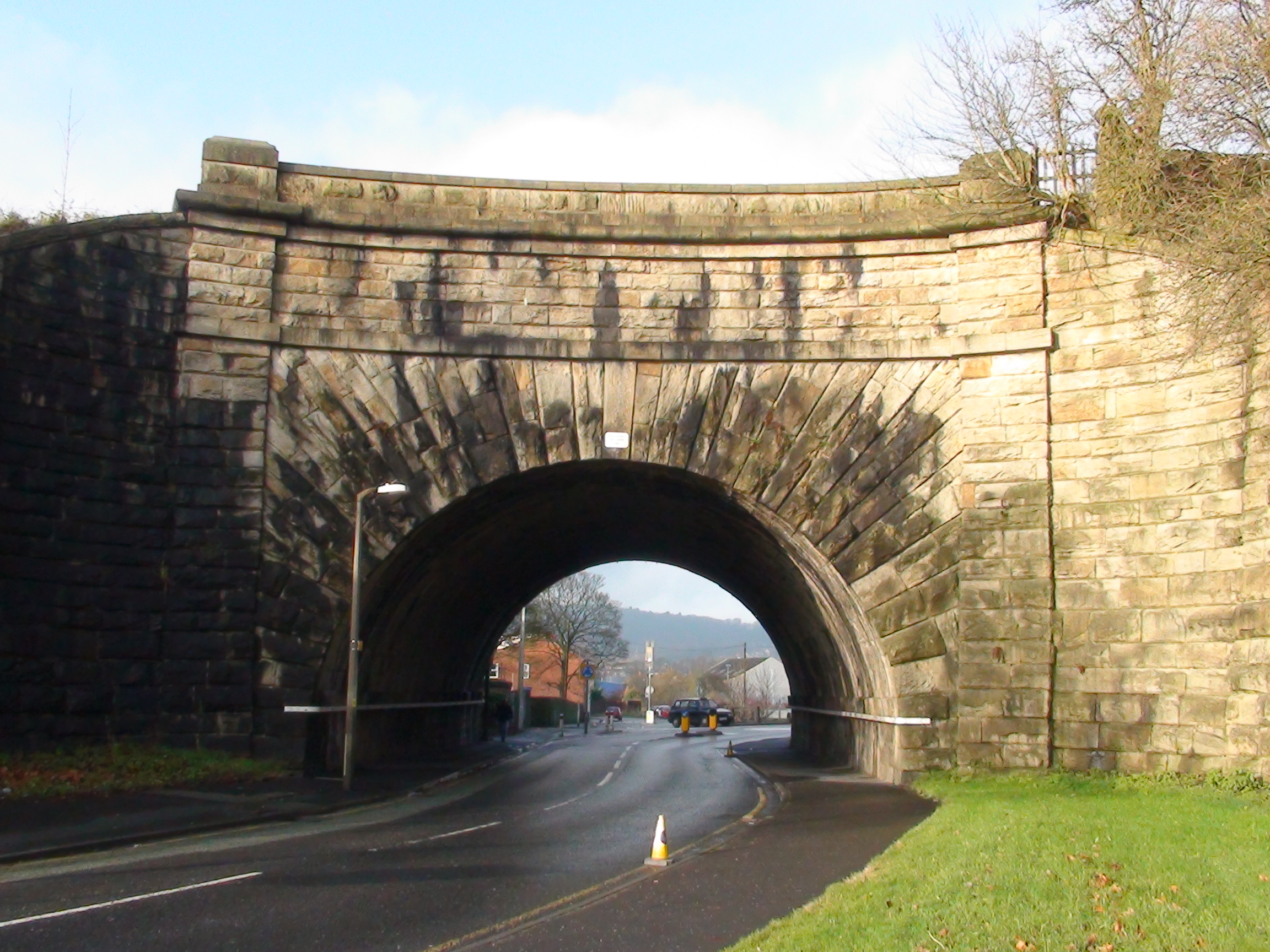Ewood Aqueduct on:
[Wikipedia]
[Google]
[Amazon]
Ewood Aqueduct is a high embankment carrying the Leeds and Liverpool Canal over the 
Heritage locations
/ref>
River Darwen
The River Darwen runs through Darwen and Blackburn in Lancashire, England, eventually joining the River Ribble at Walton le Dale south of Preston on its way to the Ribble Estuary.
Course
Originating at Jack's Key Clough where Grain Brook and Gr ...
and the B6447 road near Blackburn, Lancashire
Lancashire ( , ; abbreviated Lancs) is the name of a historic county, ceremonial county, and non-metropolitan county in North West England. The boundaries of these three areas differ significantly.
The non-metropolitan county of Lancashi ...
, England. Built of sandstone in the early 19th century, it is a Grade II listed building
In the United Kingdom, a listed building or listed structure is one that has been placed on one of the four statutory lists maintained by Historic England in England, Historic Environment Scotland in Scotland, in Wales, and the Northern Irel ...
.
History
In 1789Robert Whitworth
Robert Whitworth (1734 – 30 March 1799) was an English land surveyor and engineer, who learnt his trade under John Smeaton and James Brindley, and went on to become one of the leading canal engineers of his generation.
Biography
Whitworth was ...
varied the route of the unfinished part of the Leeds and Liverpool Canal, by building a new tunnel at Foulridge which lowered the summit level by 40 feet. He chose a more southerly route in Lancashire. This resulted in an Act of Parliament in 1790 which allowed further fund-raising for the completion. In 1794 another Act was granted authorising another change of route and yet more fund-raising. The new Foulridge Tunnel was proving difficult and expensive to dig, when it opened in 1796 it was 1,640 yards (1,500 m) long. This new route took the canal south via Burnley
Burnley () is a town and the administrative centre of the wider Borough of Burnley in Lancashire, England, with a 2001 population of 73,021. It is north of Manchester and east of Preston, at the confluence of the River Calder and River Bru ...
and Blackburn which was reached in 1810. This new route for this section of the canal meant it was now running parallel with and then crossing the isolated southern end of the Lancaster Canal
The Lancaster Canal is a canal in North West England, originally planned to run from Westhoughton in Lancashire to Kendal in south Cumbria (historically in Westmorland). The section around the crossing of the River Ribble was never completed, a ...
. Common sense prevailed and the Leeds and Liverpool Canal connected with the Lancaster Canal
The Lancaster Canal is a canal in North West England, originally planned to run from Westhoughton in Lancashire to Kendal in south Cumbria (historically in Westmorland). The section around the crossing of the River Ribble was never completed, a ...
between Wigan
Wigan ( ) is a large town in Greater Manchester, England, on the River Douglas, Lancashire, River Douglas. The town is midway between the two cities of Manchester, to the south-east, and Liverpool, to the south-west. Bolton lies to the nor ...
and Johnson's Hillock. The main line of the canal was thus completed in 1816./ref>
See also
*Burnley Embankment
The Burnley Embankment is an Embankment (earthworks), embankment carrying the Leeds and Liverpool Canal across the River Calder, Lancashire, Calder and River Brun, Brun valleys in Burnley, Lancashire. Also known as the Straight Mile, the embankm ...
References
Bridges in Lancashire Buildings and structures in Blackburn Canals in Blackburn with Darwen Grade II listed buildings in Lancashire Navigable aqueducts in England Grade II listed bridges Grade II listed canals {{UK-listed-building-stub